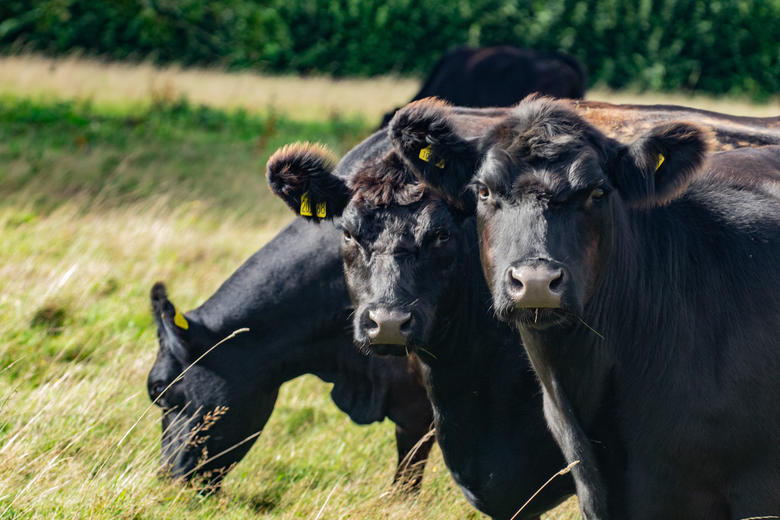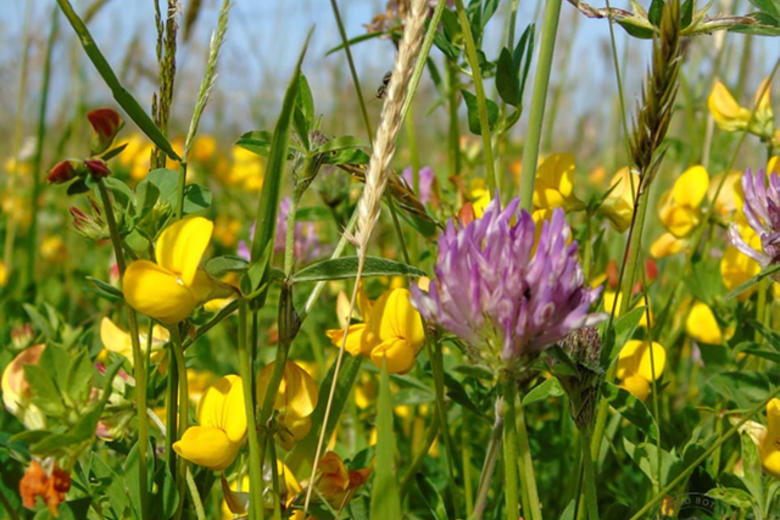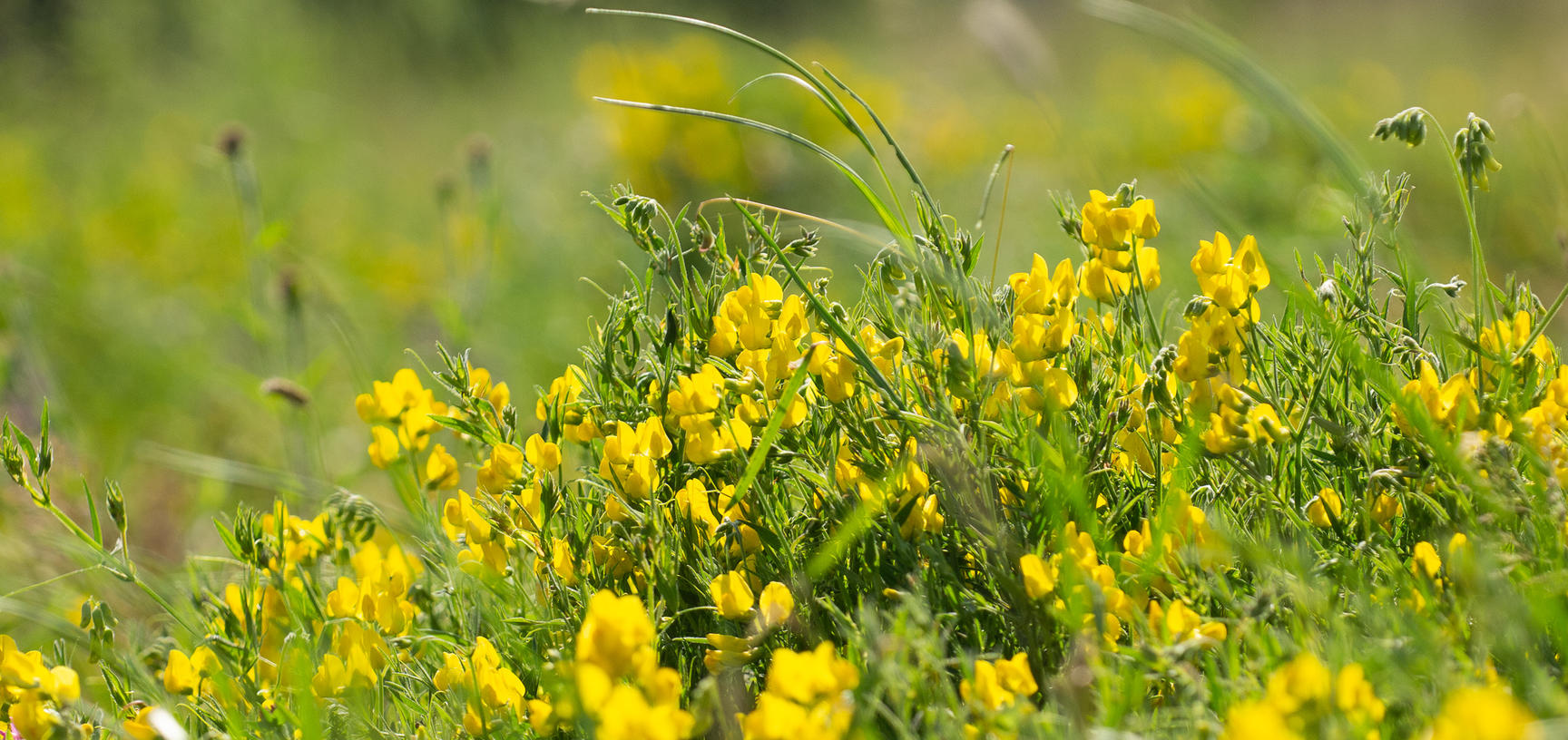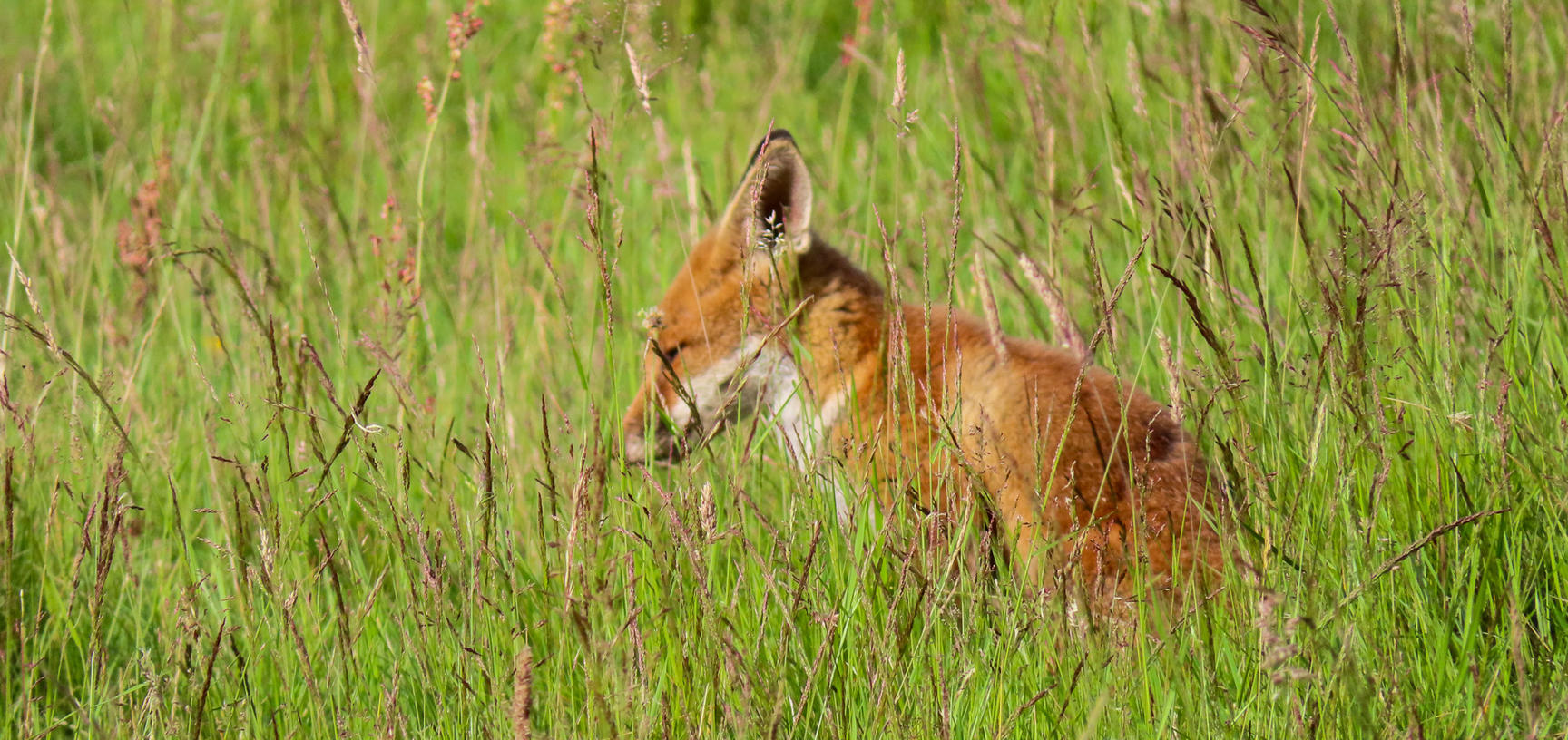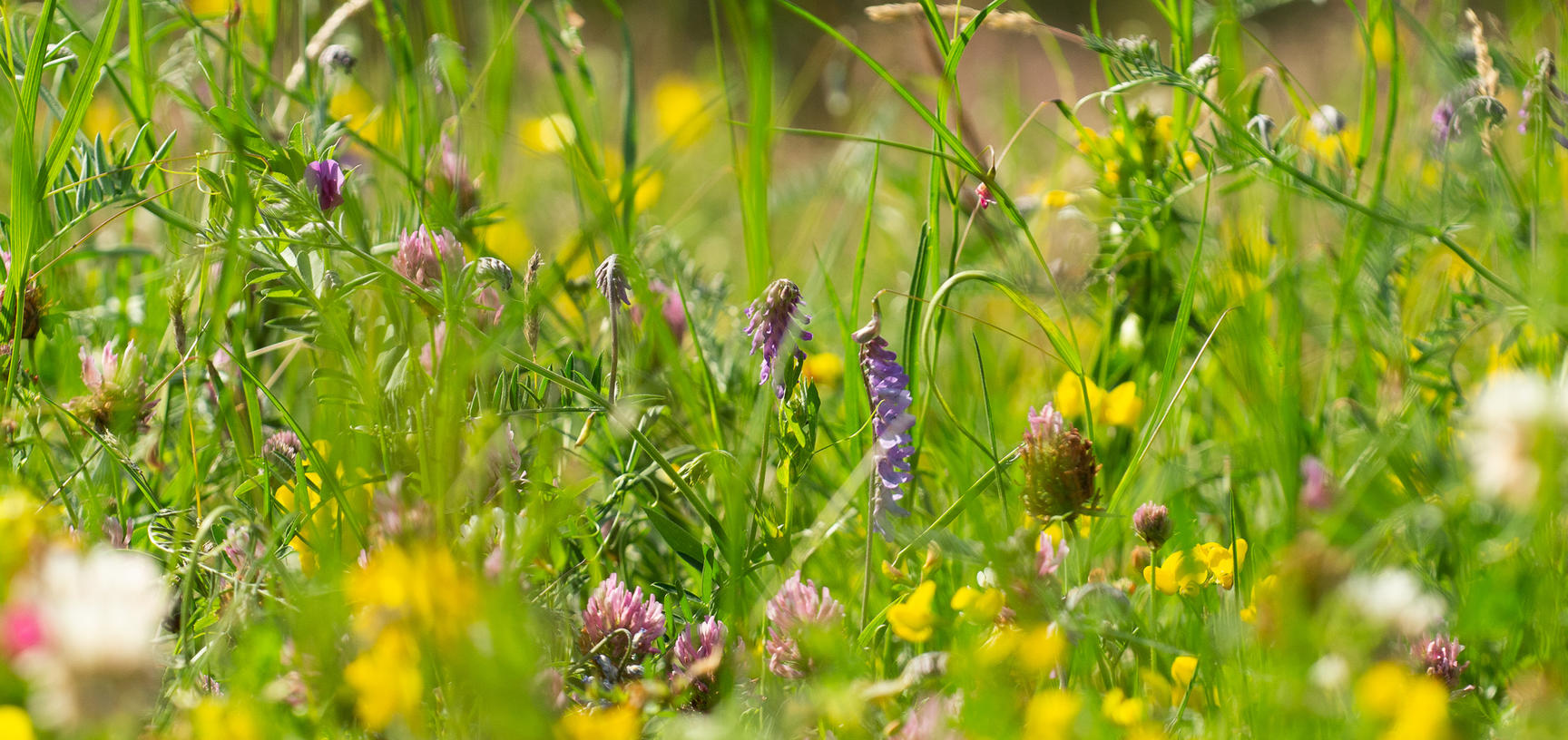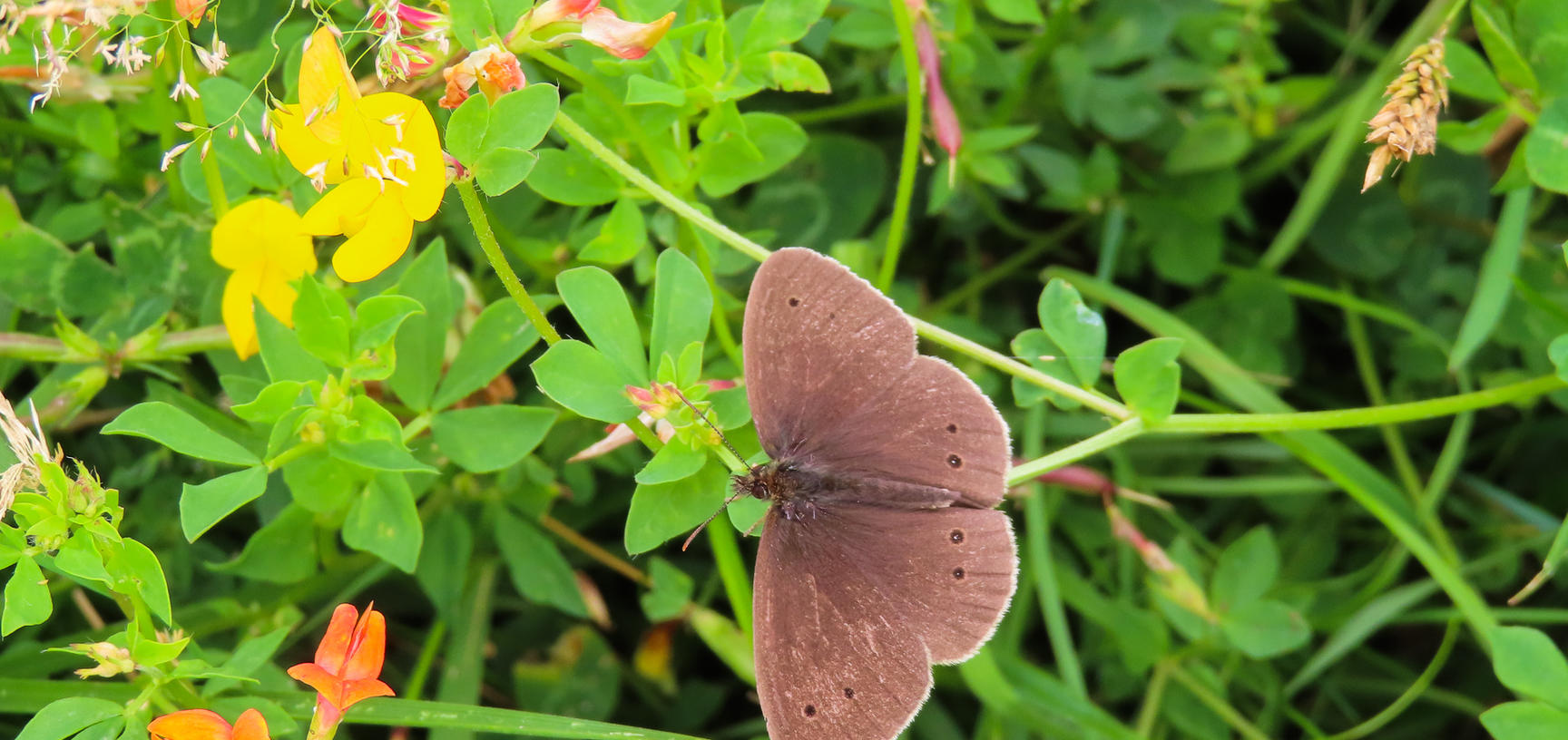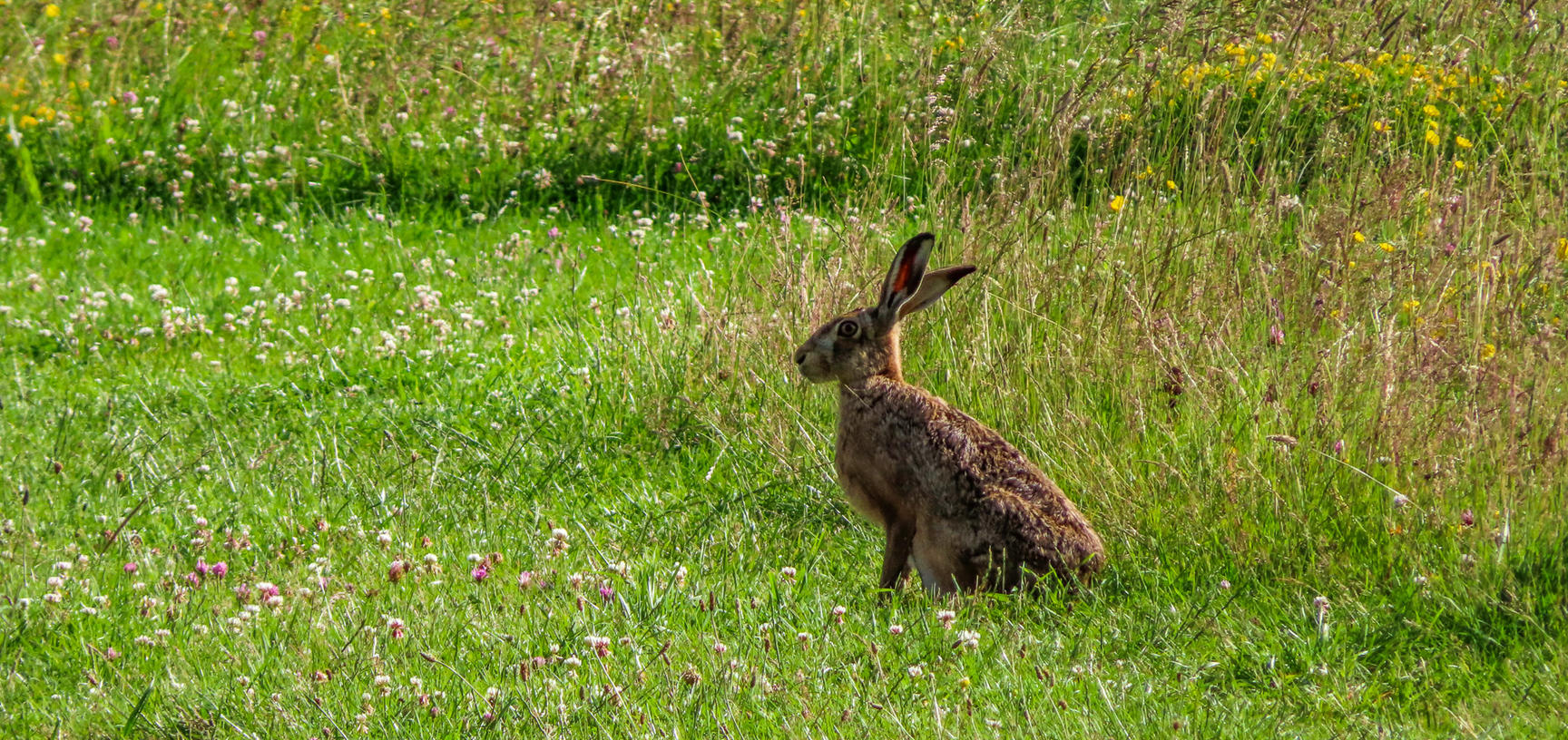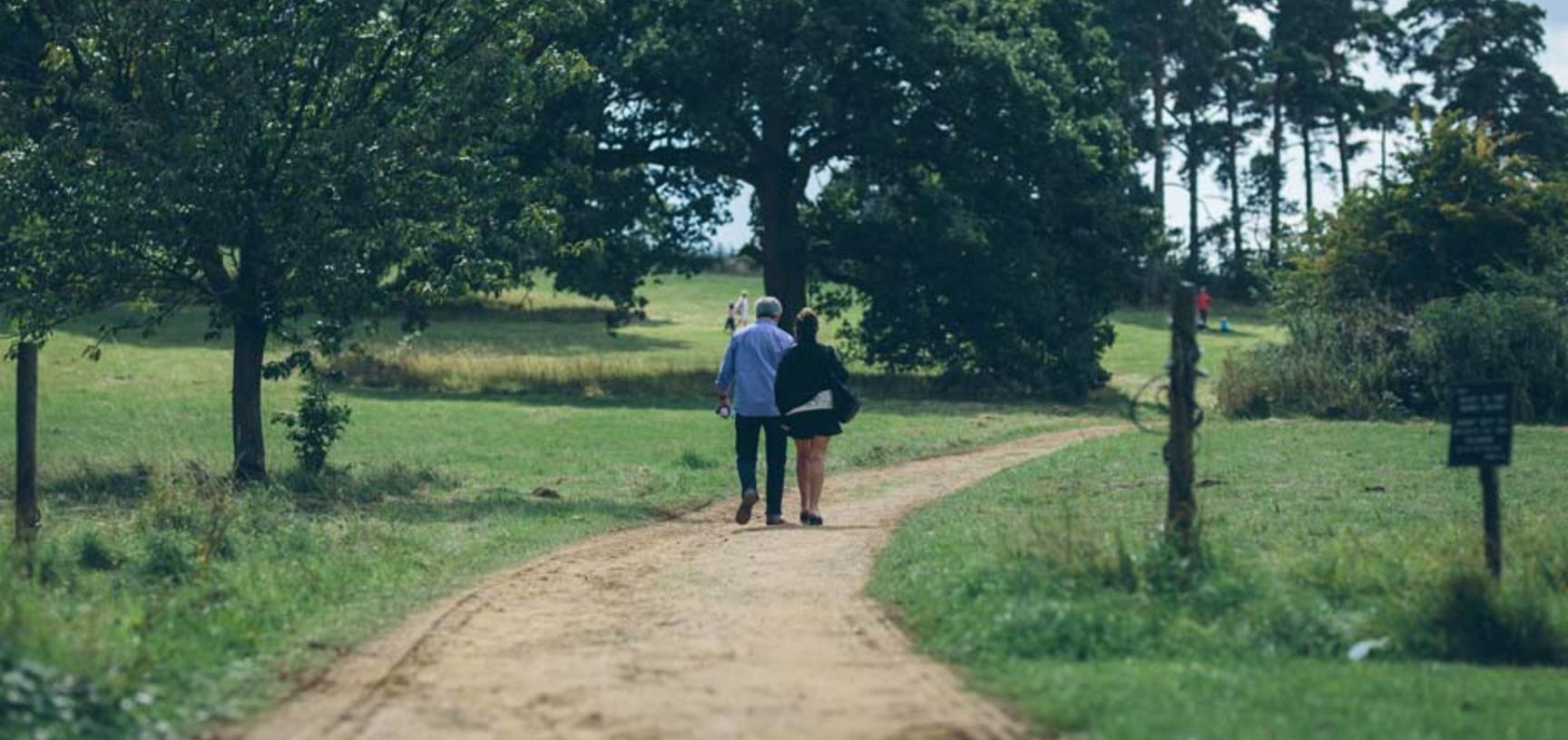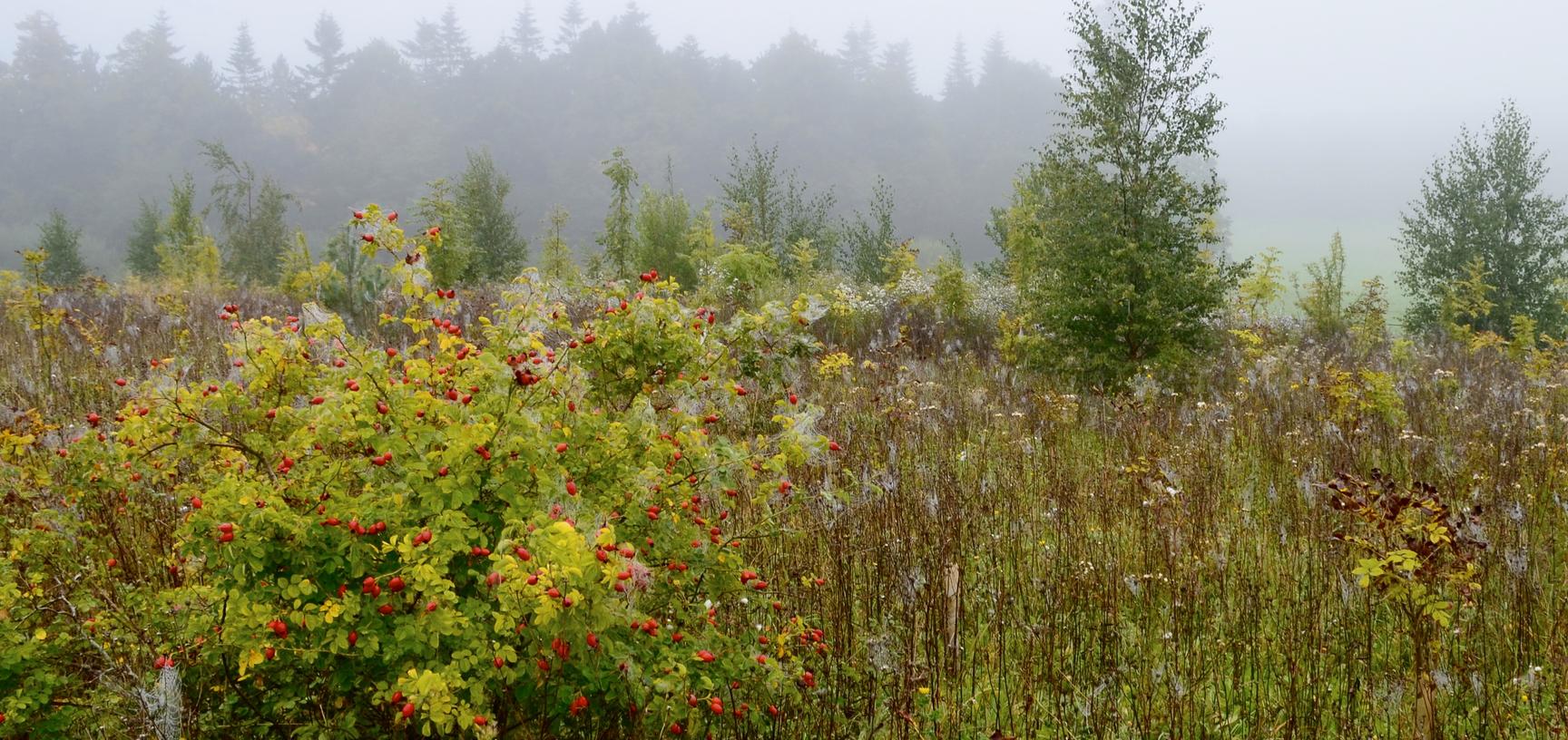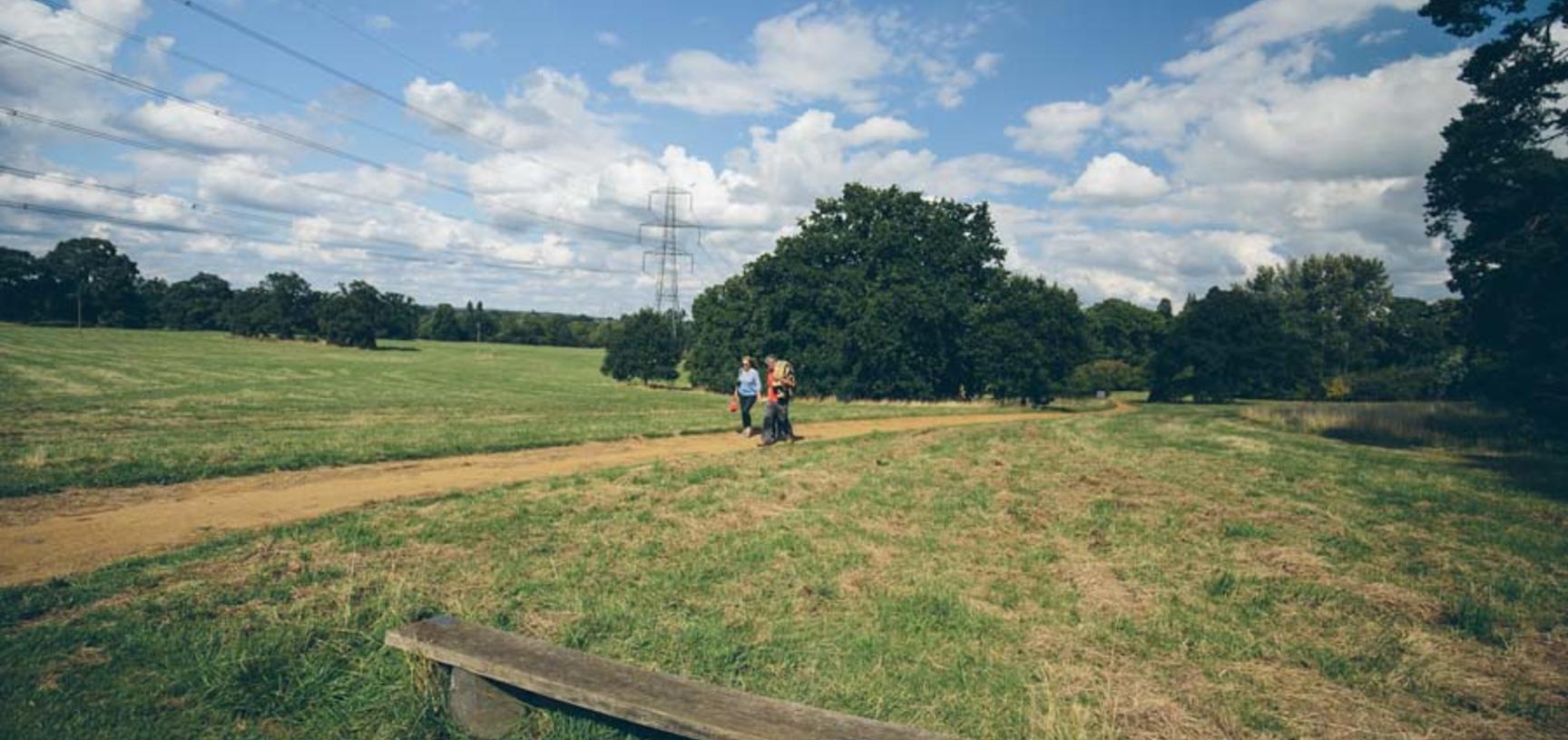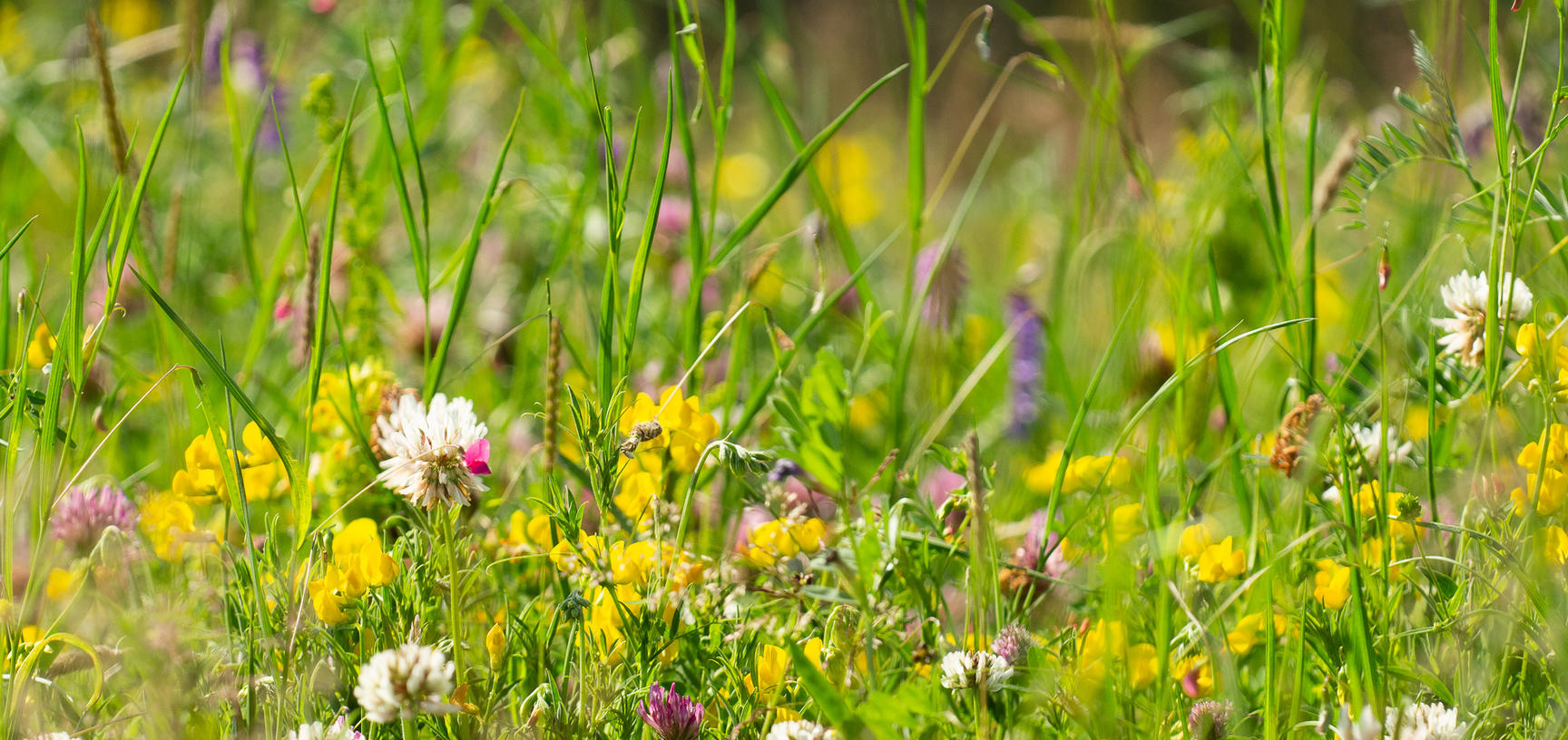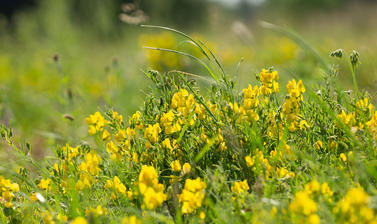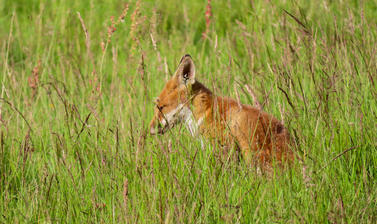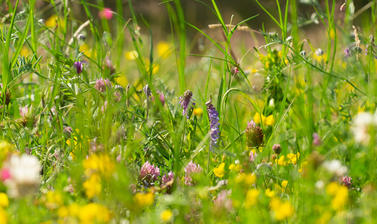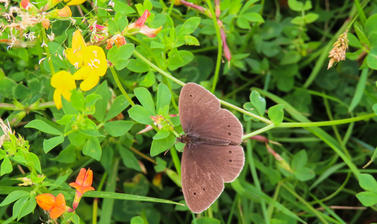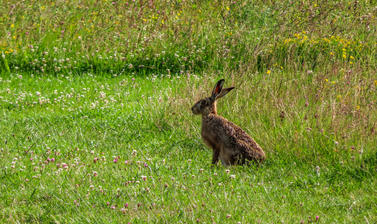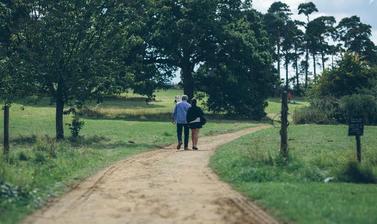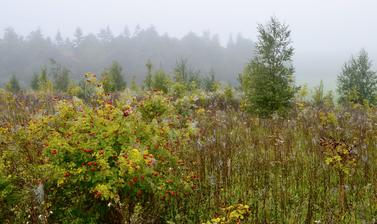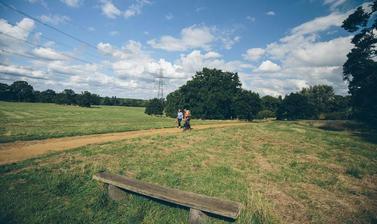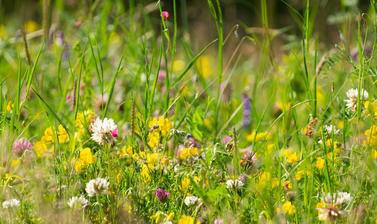Wildflower meadows and parkland
The 67 acres of parkland and wildflower meadows provide a glorious open space for our visitors to explore. From early May there are many delicate wildflowers to be found among the grasses - meadows like these are important for sustaining populations of native UK wildflowers, some of which are now vulnerable or threatened. Look out for special gems such as pyramidal orchids (Anacamptis pyramidalis) and the distinctive ragged robin (Lychnis flos-coculi) which flower in May and June.
The meadows also support a diversity of wildlife. Visitors are likely to see locally common residents such as rabbits and red kites, but should also keep an eye open for deer, hares and stoats in these areas of the Arboretum. At hay-making time areas around tree clumps and along fence lines are left uncut to provide habitats for small mammals. This in turn provides food for barn owls, which raise their young here. The meadow drains into a pond, which supports a wealth of great crested newts. The meadows also support a wide range of insects, including numerous species of butterfly and bee.
Palmer's Leys Meadow
Palmer’s Leys is 50 acres of former arable field purchased by Oxford Botanic Garden in 2006. Approximately 20 acres of this has been planted with 13,000 native trees, including oak, lime, ash, hornbeam, beech, yew and native whitebeam. The remaining 30 acres have been set aside as the focus of a restoration effort to produce a species-rich meadow similar to that of the Arboretum's adjacent semi-natural grassland.
Seeds were harvested from Pylon Meadow and supplemented with additional species from a commercial seed mix. An area of approximately 8.5 acres, was ploughed and sown in the autumn of 2008; a further 9 acres was ploughed and sown in the spring of 2010; and the final 12.5 acres were ploughed and sown in the autumn of 2010. Senior Arborist, Guy Horwood, explains this process in the video below.
https://www.youtube.com/embed/lmhSERp_-f0



